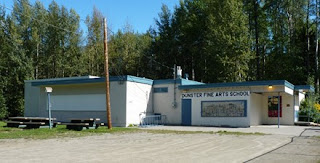Problem:
The province and district are pushing “21st Century Education” which includes better use of technology and yet many of our district’s teachers and students are denied access to wireless networks, mobile devices, and projects that fit the goals. They express frustration with computers not working as expected, or having their laptops locked down to the extent they can’t access teaching tools. The mac users are disheartened as they see their computers thrown out to supposedly save costs. A board office presentation last year to all interested staff suggested that schools would be outfitted with only the most basic of technology and that students and teachers could buy their own teaching & learning tools if they wanted to innovate. It stops being “public” education when the users, especially our students without means, are expected to supply the learning resources. The collaboration that used to take place between teachers and district staff is also gone, and is far enough gone that many of the most experienced teachers who use a lot of technology have given up on trying to get the board office to listen to their concerns. The “Chilly Climate for 21st Century Learning” report issued by a group of teachers in September listed a number of support structures for collaboration on technology that used to exist in the district but are gone now over the last 3 years: “Key Tech Contacts, Tech Coaches, Tech Innovation Grants, Tech Education Coordinator (teacher and/or district principal), and teacher input in virtually every area related to philosophy, planning, decisions, directions, budget, practice, standards, and assessment.” In addition, 4 secondary and 3 elementary projects designed to bring 21st century mobile learning ideas into classrooms were turned down by the board office last year. How many other potential projects were discouraged by this? This is the kind of work the ministry of education is trying to encourage - innovative, personalized use of technology. The district superintendent’s blog mentions innovation, disruption, and 21st century learning as ideals for the school system, so trustees need to be aware of where these ideals are being blocked in our schools and give teachers and students better chances to experiment alongside traditional paths of innovation (it doesn’t require a computer to challenge thinking, collaborate, or be creative).
Solutions
The most basic and obvious response is to say yes to teachers and students when they are passionate about pursuing innovative learning projects, technology-related or otherwise. Almost every successful program or project starts with engaged teachers who have a vision for what can be done for students. There must be cost limits and tech support to consider, but technology must be given a chance to be tested and flourish in classrooms before teachers give up.
It will be a big help for the board office to send consistent messages to teachers. If it can’t afford to support new technology, it should say so instead of talking about 21st century education but then blocking it when teachers volunteer to try it. The board office can start by allowing some of the proposed mobile learning projects to proceed or allowing teachers who are gifted with technology the access they need to use technology for powerful learning. The momentum of earlier teacher-district supports and the graduates of SFU's TLITE (tech ed diploma program) is all but lost in the disconnect of the last few years.
Pretty much every innovative use of technology in the past got its start in the district either through teacher initiative or by a partnership between teachers and a supportive board office : video editing, websites, blogs, podcasts, smartboards, interactive media, class-to-class connect, digital learning platforms, etc. Part of this is the teachers and students with ideas for how to use existing technology. The other part is the teachers and district staff sitting down together to figure out how to support it. We need a return to some level of teacher involvement in decisions, training, leadership, and coordination. It is time to end the shutout. The board office should find relief in this as they realize they can’t lead if nobody is following - get your teachers back onboard.








